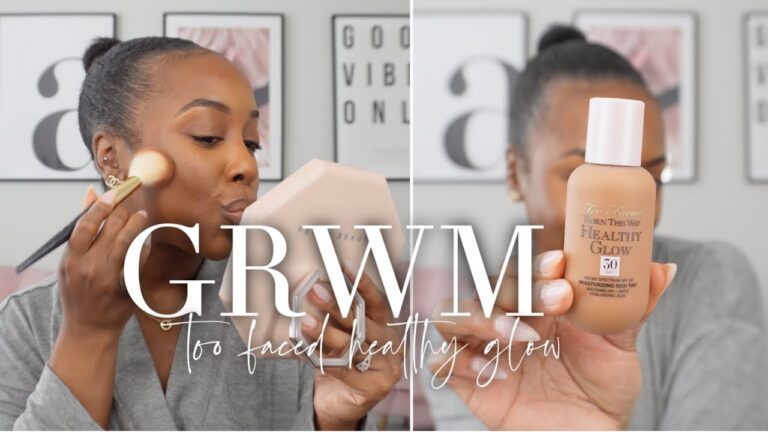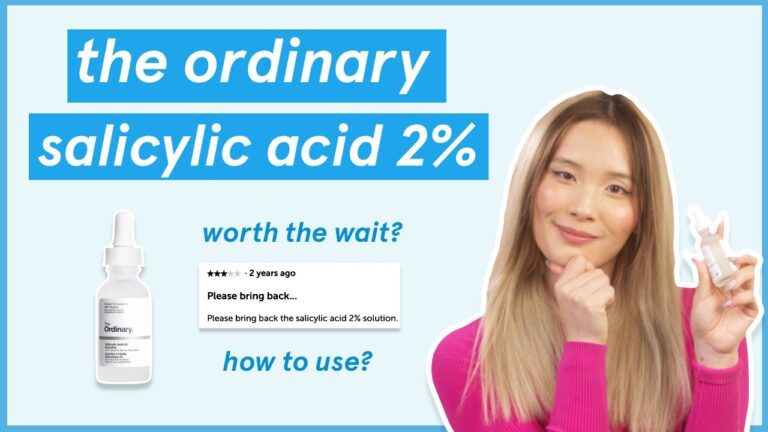Clear and Glowing: The Ultimate Skincare Routine for Acne-Prone Skin
As someone who has struggled with acne-prone skin, I know just how frustrating it can be to find a skincare routine that works. But after years of trial and error (and plenty of research), I’ve finally found a routine that keeps my skin clear and healthy. In this article, I’ll be sharing my tips for building a skincare routine for acne-prone skin.
The Importance of Cleansing
The first step in any skincare routine is cleansing, and this is especially important for those with acne-prone skin. Keeping your skin clean and free of excess oil and bacteria can help prevent breakouts before they even start. When choosing a cleanser, look for one that is labeled “oil-free” or “non-comedogenic”, as these are less likely to clog your pores. Personally, I love using the CeraVe Foaming Facial Cleanser, which is gentle but effective.
It’s also important to be gentle when cleansing your skin. While it may be tempting to scrub away at your face in the hopes of getting rid of all that acne, this can actually make the problem worse. Instead, use gentle circular motions with your fingertips, and rinse your face thoroughly with lukewarm water.
Exfoliation: A Key Step in Your Skincare Routine
While cleansing is essential, it’s not always enough to keep your skin clear. This is where exfoliation comes in. By removing dead skin cells and unclogging pores, exfoliating can help prevent breakouts and keep your skin looking fresh and bright. However, it’s important not to overdo it – too much exfoliation can damage your skin and make acne worse.
There are two types of exfoliants: physical (scrubs) and chemical (such as alpha hydroxy acids). Personally, I prefer chemical exfoliants, as they tend to be gentler on my skin. The Paula’s Choice Skin Perfecting 2% BHA Liquid Exfoliant is a cult favorite among those with acne-prone skin, and for good reason – it’s gentle yet effective, and can help prevent breakouts without drying out your skin.
Treating Acne: Spot Treatments and More
Even with a solid cleansing and exfoliating routine, you may still experience breakouts from time to time. That’s where spot treatments come in. There are plenty of over-the-counter spot treatments available, but my personal favorite is the Neutrogena Rapid Clear Stubborn Acne Spot Gel. It contains benzoyl peroxide, which can help clear up pimples quickly.
For those with more severe acne, a visit to a dermatologist may be necessary. They may recommend prescription-strength treatments or even oral medications such as antibiotics or isotretinoin.
Moisturizing: Not Just for Dry Skin
When it comes to skincare, moisturizing is often seen as a step that only those with dry skin need to worry about. But even those with oily, acne-prone skin can benefit from moisturizing. In fact, skipping moisturizer can actually make acne worse, as your skin may overcompensate by producing even more oil.
Look for a lightweight, non-comedogenic moisturizer, such as the La Roche-Posay Effaclar Mat. This moisturizer absorbs quickly and doesn’t leave a greasy residue, making it perfect for daytime use.
Sun Protection is Key
Finally, don’t forget about sun protection! UV rays can cause damage to your skin and make acne scars worse. Make sure to use a sunscreen with an SPF of at least 30 every day, even if you’re just spending time indoors. The EltaMD UV Clear Facial Sunscreen is a favorite among those with acne-prone skin, as it’s lightweight and doesn’t leave a white cast.
In Conclusion
Building a skincare routine for acne-prone skin can take some trial and error, but it’s well worth it in the end. By cleansing, exfoliating, treating breakouts, moisturizing, and protecting your skin from the sun, you can keep your skin clear and healthy. Remember to be patient and consistent, and don’t be afraid to seek out advice from a dermatologist if needed.
Contents
Most searched products:
Does Sephora Support Israel? Answering Your Questions
The Ultimate Guide to Azealic Acid: Benefits, Uses, and Side Effects
How Long Does Glycolic Acid Take to Show Results: Your Ultimate Guide
Discover the Benefits of The Ordinary Botox for Your Skin
The Ultimate Reviews of The Ordinary Peeling Solution
The Ultimate Guide to The Ordinary Colours Foundation: Reviews, Swatches, and Tips
The Perfect Order: When to Use Retinol and Niacinamide in Your Skincare Routine
Unlock the Power of Hyaluronic: Benefits, Uses, and Top Products
Say Goodbye to B.O with Glycolic Acid Deodorant: The Secret to Long-Lasting Freshness
Unlock Smooth and Supple Skin: Discover the Best Skincare Products for Skin Suppleness













